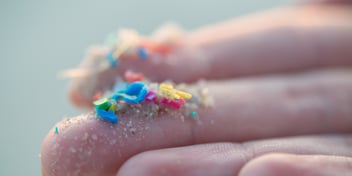Magnetic material could clean up microplastic
A new project at the University of Newcastle is investigating whether magnetic nanoparticles could offer a solution to one of our greatest environmental challenges: the presence of microplastics in waterways.
Awarded an Australian Research Council Linkage grant, the project will investigate whether magnetic nanoparticles dispersed in water can be used to collect plastics. The nanoparticles are then collected by a magnetic field and removed from the water. The microplastics can then be decomposed using extant technology.
The project is helmed by Associate Professor Jiabao Yi, a Future Fellow at the Global Innovative Centre of Advanced Nanomaterials (GICAN) at the University of Newcastle. It draws together experts from advanced nanomaterials, magnetic materials and plastics.
“We hope through this project, we can use our expertise and technology to fabricate functionalised composites with magnetic nanoparticles and halloysites for collecting microplastics and decompose them toward cleaner water,” Yi told Water Source.
“At the same time, we intend to establish a platform to train students with the knowledge of advanced nanomaterials for applications in health and environment.”
The magnetic nanoparticles would be distributed using halloysite, a naturally-formed tube-shaped nanomaterial with a large surface area.
“Halloysite is one of the best and cheapest materials available to act as a carrier for the distribution of nanoparticles, hence, the fabricated composite will be of low cost,” said Yi.
“Importantly, the magnetic nanoparticles distributed on the halloysite can maximise the contact area with microplastics, thus enhancing the collection ability.”
Microplastics are fragments of any type of plastic that are less than 5 mm in length. Due to their size, they are especially difficult to remove once they have entered a waterway.
The project is one of several to find new applications for halloysite that GICAN is working on in partnership with mining companies Mintaur and Andromeda. The companies recently discovered several million tons of high quality halloysite deposits in western South Australia.

